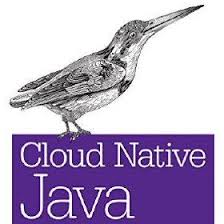Full Stack Java Development for Cloud-Native Applications with Spring Boot and DevOps: A Docker-Centric Approach
1. Introduction
The rapid evolution of cloud computing has reshaped the landscape of software development. Cloud-native applications, designed to leverage the benefits of cloud platforms, are increasingly becoming the norm. This whitepaper delves into the key aspects of building cloud-native Java applications using Spring Boot and DevOps practices, with a strong emphasis on Docker-based development and testing.
2. Understanding Cloud-Native Principles
Cloud-native applications are characterized by:
- Microservices Architecture: Breaking down applications into smaller, independent services.
- Containerization: Packaging applications and dependencies into containers for portability and scalability.
- Continuous Delivery and Deployment: Automating the software delivery pipeline.
3. Spring Boot: A Foundation for Cloud-Native Development
Spring Boot simplifies the development of Spring-based applications by providing auto-configuration, embedded servers, and opinionated defaults. Key features for cloud-native development include:
- Microservice Development: Support for building and deploying microservices.
- Cloud Integration: Seamless integration with cloud platforms like AWS, Azure, and GCP.
- Reactive Programming: Asynchronous, non-blocking programming model for building scalable applications.
4. Docker: A Catalyst for Cloud-Native Development
Docker revolutionizes application development and deployment by providing lightweight, portable containers. Key benefits include:
- Consistent Environments: Ensures applications run consistently across different environments.
- Rapid Deployment: Streamlines the deployment process.
- Efficient Resource Utilization: Optimizes resource usage.
5. Docker-Based Development and Testing
- Local Development:
- Docker Compose: Define and run multi-container applications locally, including databases, message queues, and other services.
- Docker Desktop: Provides a user-friendly interface for managing Docker containers and images.
- Testing:
- Test Isolation: Run tests in isolated Docker containers to prevent interference.
- Test Automation: Integrate Docker into CI/CD pipelines to automate testing.
- Performance Testing: Simulate production-like loads using tools like JMeter or Gatling.
- Deployment:
- Container Orchestration: Use Kubernetes to manage and deploy Docker containers to production.
- Image Repositories: Store Docker images in a registry like Docker Hub or a private registry.
6. DevOps Practices for Cloud-Native Applications
DevOps practices streamline the software delivery pipeline and improve collaboration between development and operations teams. Key practices include:
- Continuous Integration (CI): Automate the build, test, and integration process.
- Continuous Delivery (CD): Automate the deployment process.
- Infrastructure as Code (IaC): Manage infrastructure using code (e.g., Terraform, Ansible).
- Monitoring and Logging: Monitor application performance and troubleshoot issues.
7. Security Considerations
- Image Security: Scan images for vulnerabilities and apply security patches.
- Network Security: Secure network traffic between containers and external services.
- Data Security: Protect sensitive data with encryption and access controls.
8. Best Practices
- Use Lightweight Base Images: Minimize image size and improve performance.
- Optimize Dockerfiles: Use multi-stage builds to reduce image size.
- Leverage Docker Compose: Simplify the management of multi-container applications.
- Automate Testing: Write comprehensive tests to ensure code quality.
- Monitor and Log: Track application performance and troubleshoot issues.
9. Conclusion
By combining Spring Boot, Docker, and DevOps practices, you can build and deploy robust, scalable, and highly available cloud-native Java applications. By following best practices and leveraging the power of Docker, you can streamline your development and deployment processes, ensuring efficient and reliable delivery of your software.
References:
- Spring Boot Documentation: https://docs.docker.com/
- Kubernetes Documentation: https://www.jenkins.io/
- GitLab CI/CD: https://circleci.com/
- Prometheus: https://grafana.com/
- ELK Stack:
By incorporating these references, you can further enhance the depth and credibility of your whitepaper. Contact ias-research.com for details.



